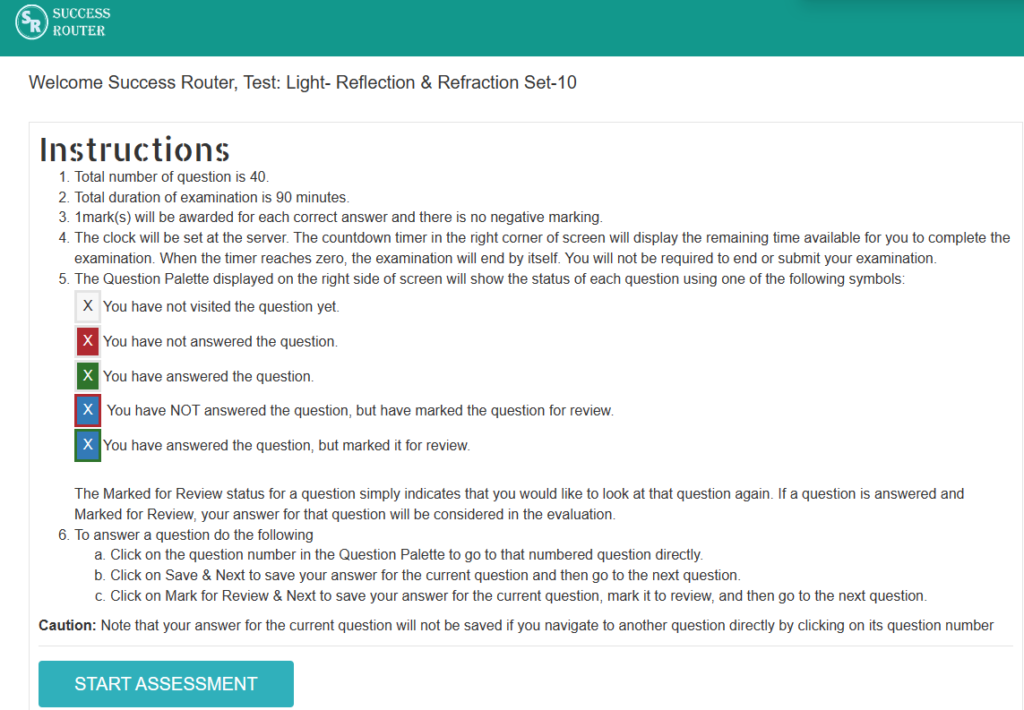Last Updated on November 16, 2025 by XAM CONTENT
Hello students, we are providing case study questions for class 9 science. Case study questions are the new question format that is introduced in CBSE board. The resources for case study questions are very less. So, to help students we have created chapterwise case study questions for class 9 science. In this article, you will find case study questions for cbse class 9 science chapter 7 Motion.
| Chapter | Motion |
| Type of Questions | Case Study Questions |
| Nature of Questions | Competency Based Questions |
| Board | CBSE |
| Class | 9 |
| Subject | Science |
| Theme | Moving Things, People and Ideas |
| Useful for | Class 9 Studying Students |
| Answers provided | Yes |
| Difficulty level | Mentioned |
| Important Link | Class 9 Science Chapterwise Case Study |
Case Study Questions on Motion
Questions
Question 1:
The change in the position of an object with time can be represented on the distance-time graph adopting a convenient scale of choice. In this graph, time is taken along the -axis and distance is taken along the
-axis. This graph shows that the distance travelled by the trains is directly proportional to time taken.
Study the graph related to distance-time graph of two trains and answer the questions that follow:

Read the given passage carefully and give the answer of the following questions:
Q 1. How much ahead of A is B when the motion starts?
Difficulty Level: Medium
Q 2. What is the speed of B?
Difficulty Level: Medium
Q 3. When and where will A catch B?
Difficulty Level: Medium
Q 4. What is the difference between the speeds of A and B?
Difficulty Level: Medium
Q 5. Is the speed of both the trains uniform? Justify your answer.
Difficulty Level: Medium
Answers
1. B is 100km ahead of A.

2. Speed of B
Speed of $B=\frac{Q R}{P R}=\frac{150-100}{2-0}=\frac{50}{2}$ $$ =25 \mathrm{~km} / \mathrm{hr} $$3. A will catch B after 2 hours at a distance of 150 km.
4. Speed of A
$$ \text { Speed of } A=\frac{Q S}{O S}=\frac{150-0}{2-0}=\frac{150}{2}=75 \mathrm{~km} / \mathrm{hr} $$Difference = 75 – 25 = 50 km/hr
5. Yes, because both are straight line graphs.
🎯 Match the Column – Motion
🎯 Concept Pyramid Game – Motion
Loading question…

Also check
Case study questions for other chapters of class 9 science is given below.
- Structure of the Atom Class 9 Case Study Questions Science Chapter 4
- Atoms and Molecules Class 9 Case Study Questions Science Chapter 3
- Improvement in Food Resources Class 9 Case Study Questions Science Chapter 12
- Sound Class 9 Case Study Questions Science Chapter 11
- Work and Energy Class 9 Case Study Questions Science Chapter 10
- Gravitation Class 9 Case Study Questions Science Chapter 9
- Force and Laws of Motion Class 9 Case Study Questions Science Chapter 8
- Motion Class 9 Case Study Questions Science Chapter 7
- Tissues Class 9 Case Study Questions Science Chapter 6
- The Fundamental Unit of Life Class 9 Case Study Questions Science Chapter 5
- Is Matter Around Us Pure Class 9 Case Study Questions Science Chapter 2
- Matter in Our Surroundings Class 9 Case Study Questions Science Chapter 1
We hope the given case study questions for Motion Class 9 helps you in your learning.
🚀 Boost Your Exam Prep: Get case study questions for all subjects (Class 6-12) now!
👉 Explore more resources on CBSE Class 9
Helpful Links for CBSE Class 9 Science Preparation
- Download Latest Sample Papers for CBSE Class 9 Science
- Download Worksheets for CBSE Class 9 Science
- Download Chapter Tests for CBSE Class 9 Science
- Download Case Study Question Bank for CBSE Class 9 Science
- Download Numerical Problems for CBSE Class 9 Physics
- Download Important MCQs for CBSE Class 9 Physics
Topics from which case study questions may be asked
- Rest and Motion
- Distance and displacement
- Speed and Velocity
- Uniform and non-uniform motion along a straight line
- Acceleration
- Distance-time graph
- Velocity-time graphs for uniform motion and uniformly accelerated motion
- Elementary idea of uniform circular motion.
Motion: A body is said to be in a state of motion when its position changes continuously with reference to a point, e.g., vehicles moving on road, flying birds, etc.
Rest: A body is said to be in the state of rest when its position does not change with respect to a reference point, e.g., tree, building, etc.
Ratio of displacement and distance is always less than or equal to 1.
For further practice on case study questions related to Motion Class 9 Science, we recommend exploring the link given below.
Quiz
| Topic | Motion |
| Useful for | CBSE Class 9 Students |
| Type of Questions | MCQs |
| No. of Questions | 40 |
| Solutions | Instant Solutions after Completion of Quiz |
| Quiz Link | Click here to Take Test |
| Price | Free |
How to take quiz or test using the given link
It’s quite simple!
Step 1: Click on the given link. You will see the below screen.

Step 2: Fill in the necessary details. There is no need to register. Just fill your email and name and click on the button “Take Assessment”. The below screen will appear.

Step 3: Click on start assessment. Now you are ready to take test.
🎯 Virtual Lab: Free Fall Experiment
Frequently Asked Questions (FAQs) on Motion Case Study Questions
Q1: What are case study questions for CBSE examinations?
A1: Case study questions in CBSE examinations typically involve scenarios or real-life examples, requiring students to apply their understanding of concepts to solve problems or analyze situations.
Q2: Why are case study questions important for understanding class 9 science chapters?
A2: Case study questions provide a practical context for students to apply theoretical knowledge to real-world situations, fostering deeper understanding and critical thinking skills.
Q3: How should students approach answering case study questions for CBSE?
A3: Students should carefully read the case study, identify the key issues or problems presented, analyze the information provided, apply relevant concepts and principles of chemical reactions and equations, and formulate well-supported solutions or responses.
Q4: Are there any resources available online for students to practice case study questions on class 9 science chapters for CBSE exams?
A4: Yes, several educational websites offer case study questions for CBSE students preparing for science examinations. We also offer a collection of case study questions for all classes and subject on our website. Visit our website to access these questions and enhance your learning experience. If you need more case study questions for your preparation, then you visit Physics Gurukul website.
Q5: How can students effectively prepare for case study questions on “Motion” for CBSE exams?
A5: Effective preparation strategies include regular revision of concepts, solving practice questions, analyzing case studies from previous exams, seeking clarification on doubts, and consulting with teachers or peers for guidance and support.
Q6: How can teachers incorporate case study questions on “Motion” class 9 science into classroom teaching?
A6: Teachers can integrate case studies into lesson plans, group discussions, or interactive activities to engage students in active learning, promote problem-solving skills, and facilitate a deeper understanding of “Motion”.
Q7: What is the main difference between distance and displacement?
A7: Distance is the actual path length travelled by an object, irrespective of direction.
Displacement is the shortest straight-line distance between initial and final positions, along with direction.
Distance is scalar; displacement is vector.
Q8: Can distance be zero while displacement is not zero? Explain.
A8: No.
Distance can be zero only if the object doesn’t move.
But if it moves, displacement becomes zero only when the object returns to its starting point.
So distance = 0 and displacement ≠ 0 is not possible.
Q9: A body moves in a circular path. What is its displacement after one complete round?
A9: After one full revolution the final position = initial position.
Hence displacement = 0, but distance = circumference of the circle.
Q10: How is average speed different from average velocity?
A10: Average speed = total distance / total time
Average velocity = total displacement / total time
If displacement = 0 (e.g., round trip), average velocity becomes 0 but average speed is non-zero.
Q11: When is the average velocity of a moving body zero?
A11: When total displacement is zero.
Example: A person goes from home to school (1 km) and returns home.
Total distance = 2 km, but displacement = 0 → average velocity = 0.
Q12: What does the slope of a distance–time graph represent?
A12: Speed of the object.
Higher slope = higher speed.
A straight line shows uniform speed; a curved line shows non-uniform speed.
Q13: What does the slope of a velocity–time graph indicate?
A13: Acceleration.
Positive slope → acceleration
Negative slope → retardation
Zero slope → uniform velocity
Q14: What do you understand by uniform motion? Give an example.
A14: If a body covers equal distances in equal intervals of time, it is in uniform motion.
Example: A car moving at a steady speed of 60 km/h.
Q15: If velocity–time graph is a horizontal line parallel to the time axis, what does it show?
A15: It shows constant (uniform) velocity and zero acceleration.
Q16: Why is motion along a straight line described using only one coordinate?
A16: Because the motion is one-dimensional. The object moves only in one direction, so a single coordinate (x) fully describes its position.
Q17: How can acceleration be negative? Give an example.
A17: Negative acceleration (retardation) occurs when velocity decreases with time.
Example: A car applying brakes and slowing down from 50 km/h to 20 km/h.
Q18: A car starts from rest. What does this imply about its initial velocity?
A18: If a body starts from rest, its initial velocity u = 0.
Q19: What does the area under a velocity–time graph represent?
A19: Displacement of the object.
Area = velocity × time = displacement (for uniform velocity).
Q20: Why is displacement a vector quantity?
A20: Because it has both magnitude and direction.
Example: 5 m east.
Q21: Can the speed of an object be negative? Explain.
A21: No. Speed is scalar and cannot be negative.
Velocity can be negative because it has direction, but speed is always positive or zero.
Download Customised White Label Study Materials in MS Word Format
We are providing teaching resources to teachers and coaching institute looking for customised study materials in MS word format. Our High-quality editable study material which is prepared by the expert faculties are Highly useful for Teachers, Mentors, Tutors, Faculties, Coaching Institutes, Coaching Experts, Tuition Centers.



